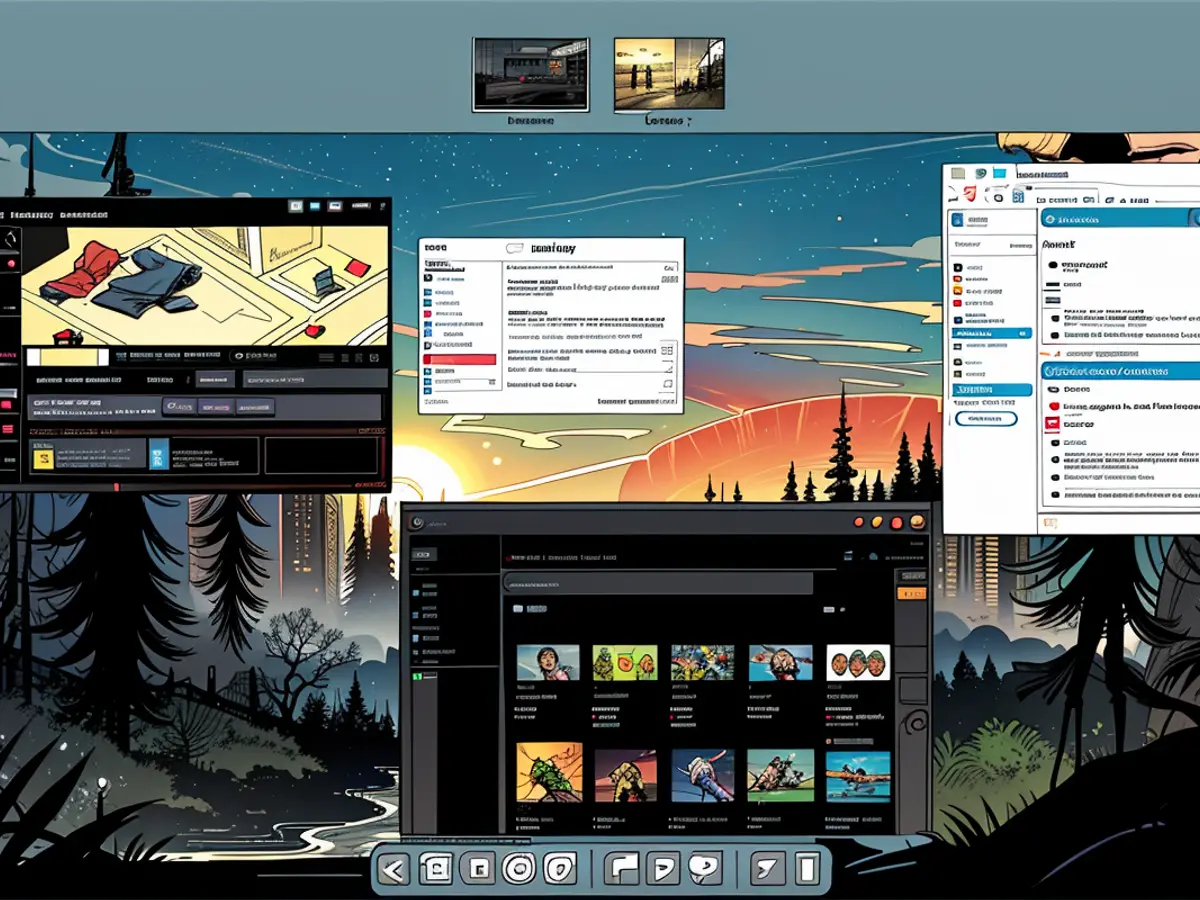How to Manage Multiple Spaces on macOS
It's all too easy for your Mac desktop to get cluttered up with open apps and scattered windows—and there's a built-in solution for giving you more room to work in, besides investing in an extra monitor. The feature is called "multiple spaces" (or virtual desktops, in old computer speak), the equivalent of multiple desktops on Windows.
The idea is you get a series of virtual copies of your main desktop, which can then be used to organize your various apps on. You might have different desktops for different areas of work, for instance, or maybe have one desktop for productivity (Google Docs and Slack) and one desktop for leisure time (Netflix and Instagram).
It's up to you how you make use of them—part of the appeal is their flexibility—but you should certainly be aware of multiple spaces and their potential.
Setting up your first space

Mission Control gives you an overview of your programs.Credit: Aussiedlerbote
To start working with multiple spaces, you need to launch Mission Control, the macOS interface for showing all of your open application windows. You can either tap the dedicated Mission Control button (showing three rectangles, above F3), press Ctrl+Up arrow, or swipe up with three fingers on the trackpad.
Once you're in Mission Control, you'll see all of your desktops at the top—though to begin with, there will just be the one Desktop heading. Click the (plus) button in the top right corner to create a new desktop space, which will be added to the thumbnails at the top. Click on any of the desktop thumbnails to jump to that space.
You'll notice that every desktop has the same dock and the same desktop icons, though you can have different programs on each desktop. For apps that allow multiple instances—such as your web browser, or Finder—you can run different instances on different desktops. You could have social media websites on one desktop and work sites like Slack and Google Docs open on another, for example.
Other apps, such as Photoshop, can only run once and on one desktop. If you attempt to launch apps like this a second time, you'll be taken back to the desktop where they're currently running. You can move apps between spaces by dragging them to the edges of the screen, or by dragging then around in Mission Control.
If you want to, you can specify which desktop a particular app should open up in, by default: Open the program, Ctrl+click on its icon in the dock, then choose from the options listed. You can specify a particular screen for an application to open up in as well, if you have more than one display on your Mac.
Managing multiple spaces

Mission Control options in System Settings.Credit: Aussiedlerbote
Head to Mission Control whenever you want to jump between spaces. As well as navigating via Mission Control, you can also hold down the Ctrl key and tap on the Left or Right arrow to go left and right between your spaces. Swiping left or right with three fingers on the trackpad does the same job.
You can't rename desktops to make them easier to identify, but you can set separate backgrounds for each one, which helps when cycling through the various thumbnails. You can set a backdrop on any desktop in the normal way: Right-click on a blank area of the desktop, and choose Change Wallpaper from the menu.
To close down a desktop, right-click on its thumbnail in Mission Control, then click on the X icon that appears next to it. Any open apps on the desktop space won't be closed down, so you're not going to lose any work—instead they get shifted over to the primary desktop where you can find them again.
There are various options for multiple spaces, which you can find in the Mission Control section under Desktop & Dock in System Settings on the Apple menu. The toggle switches control whether macOS reorders your spaces based on how you use them, uses separate spaces for separate displays (if you have more than one connected), and groups windows for the same application together on the same space.
We recently featured the Spaceman utility as well, which adds a useful bit of extra functionality to multiple spaces in macOS: It means you can see right on the menu bar which desktop space you're currently in, and even label them with different names. The program is open source and free to use.
- To organize your web browser or Finder windows, you can run multiple instances of these apps on different desktops within macOS's "multiple spaces" feature. This is especially useful if you want to separate social media websites from work sites like Slack and Google Docs.
- If you prefer to have your web browser or Finder open on a specific desktop by default, you can set this preference by right-clicking on the app's icon in the macOS Dock, selecting 'Options', and choosing the desired desktop from the list.








